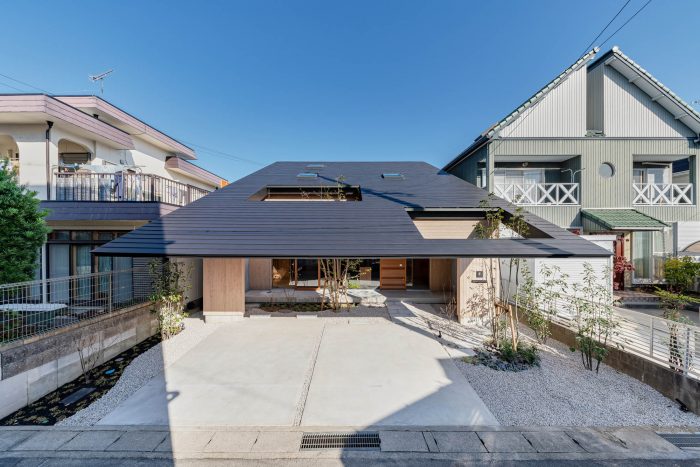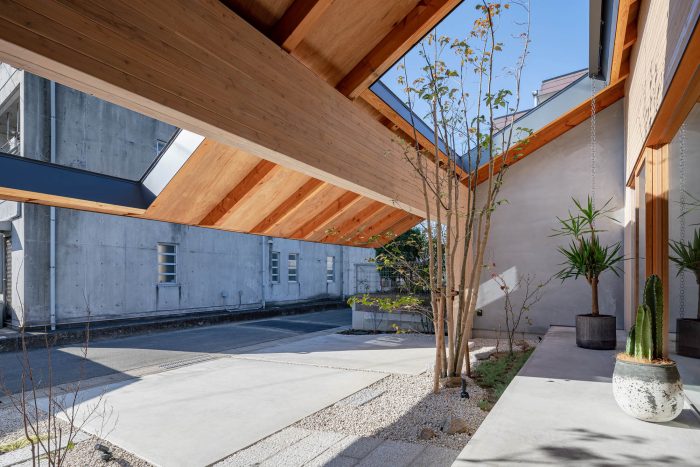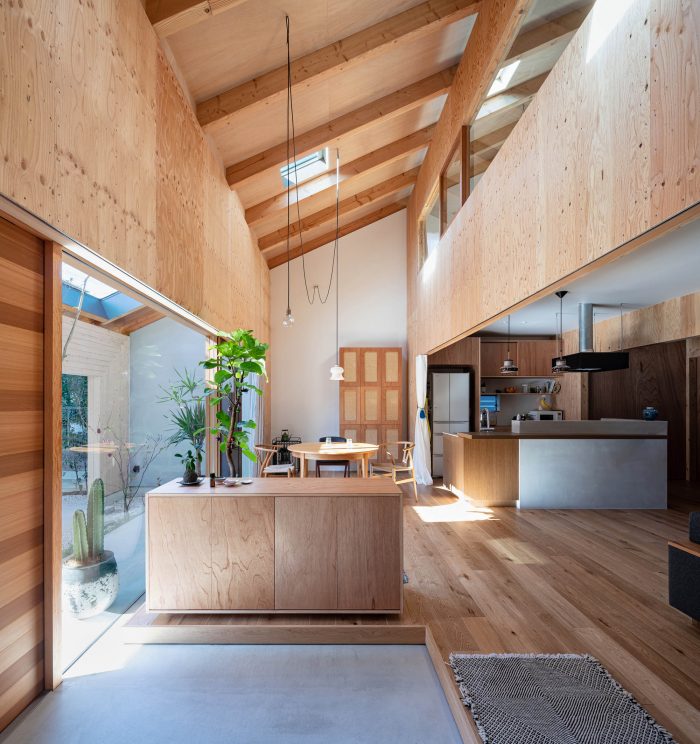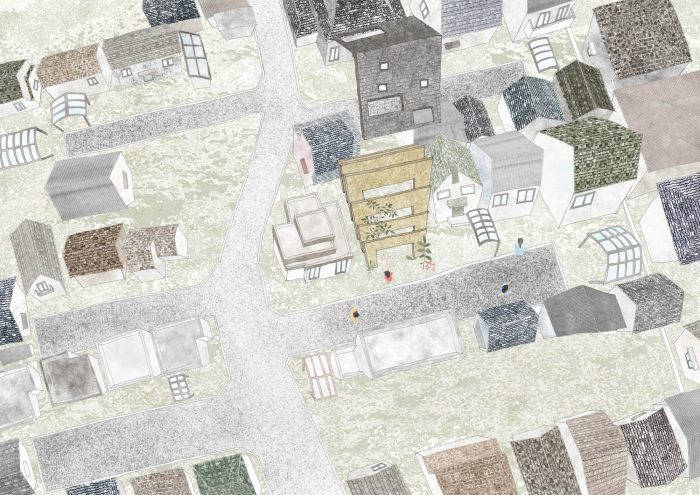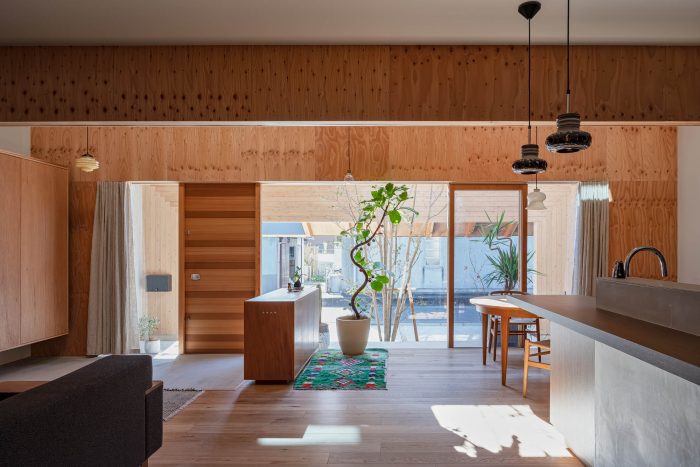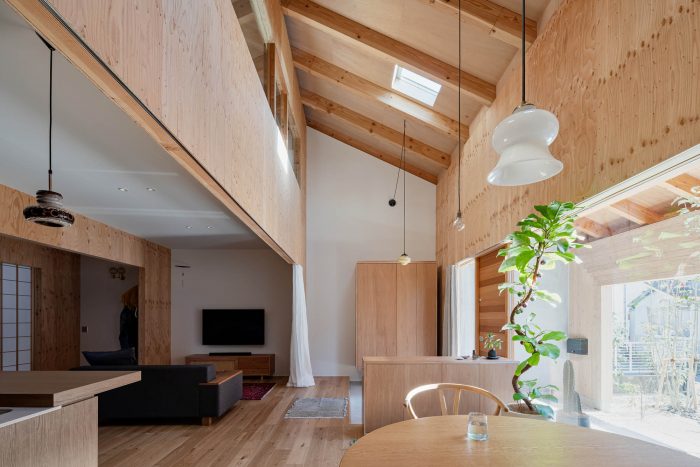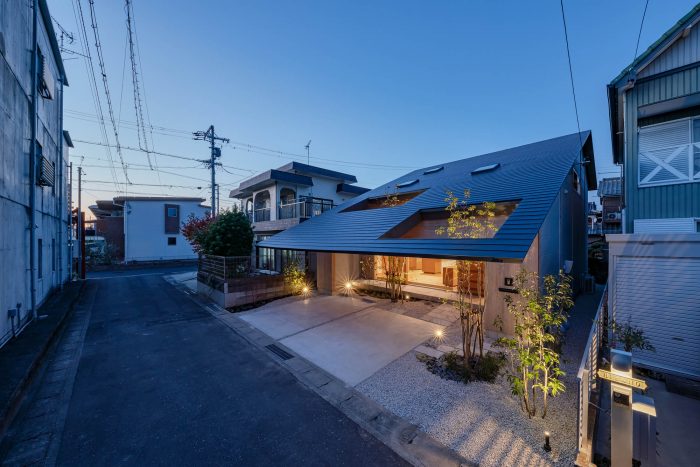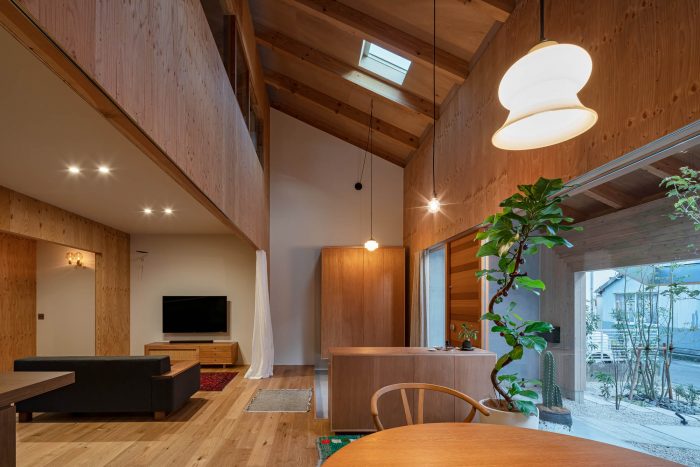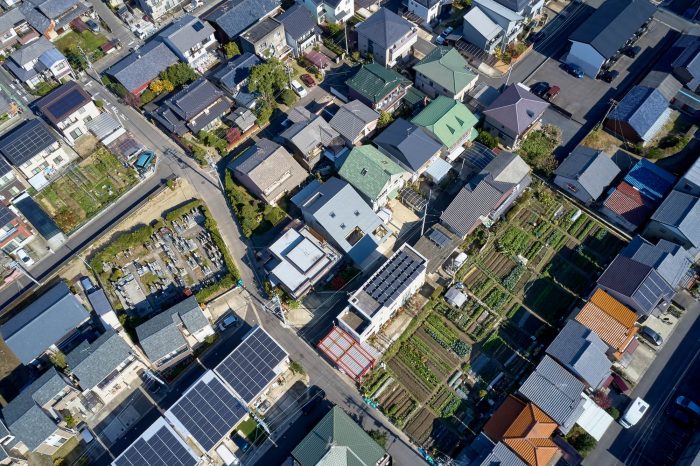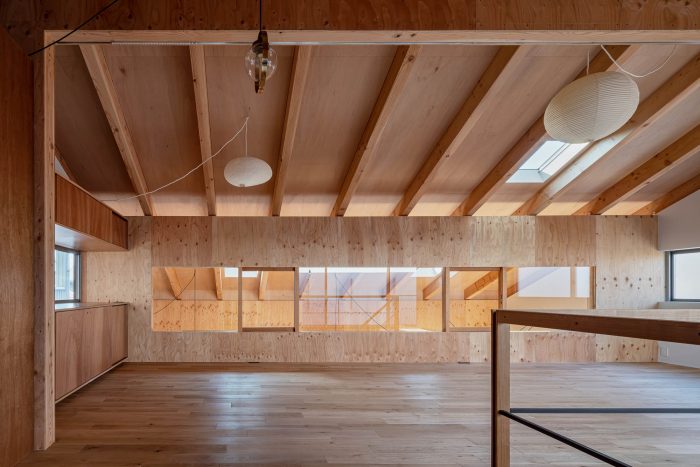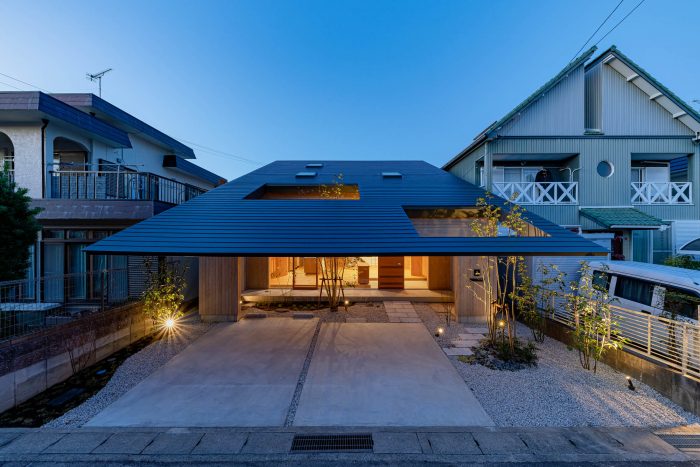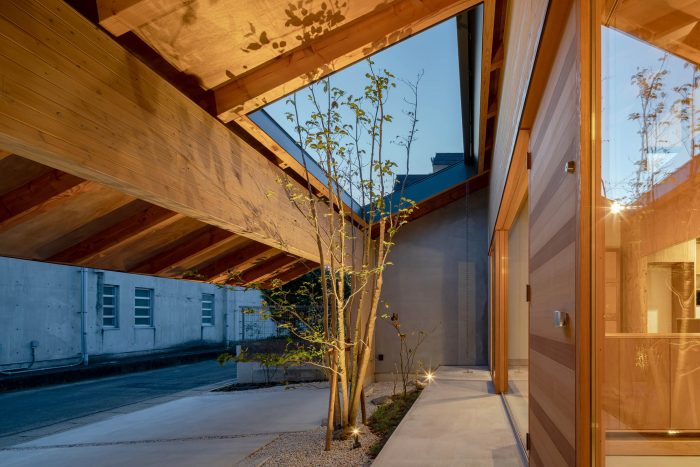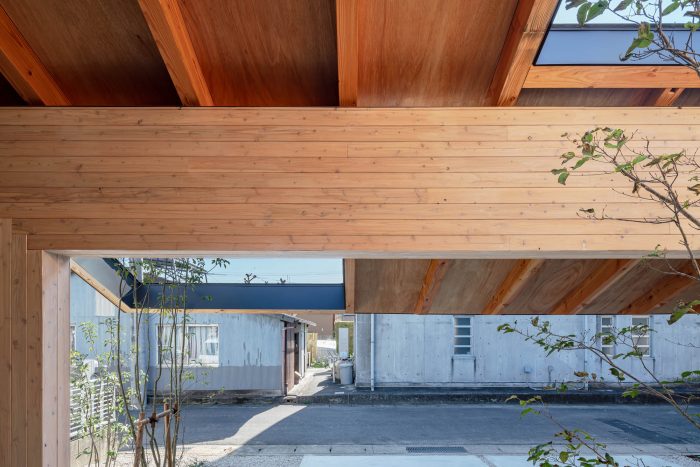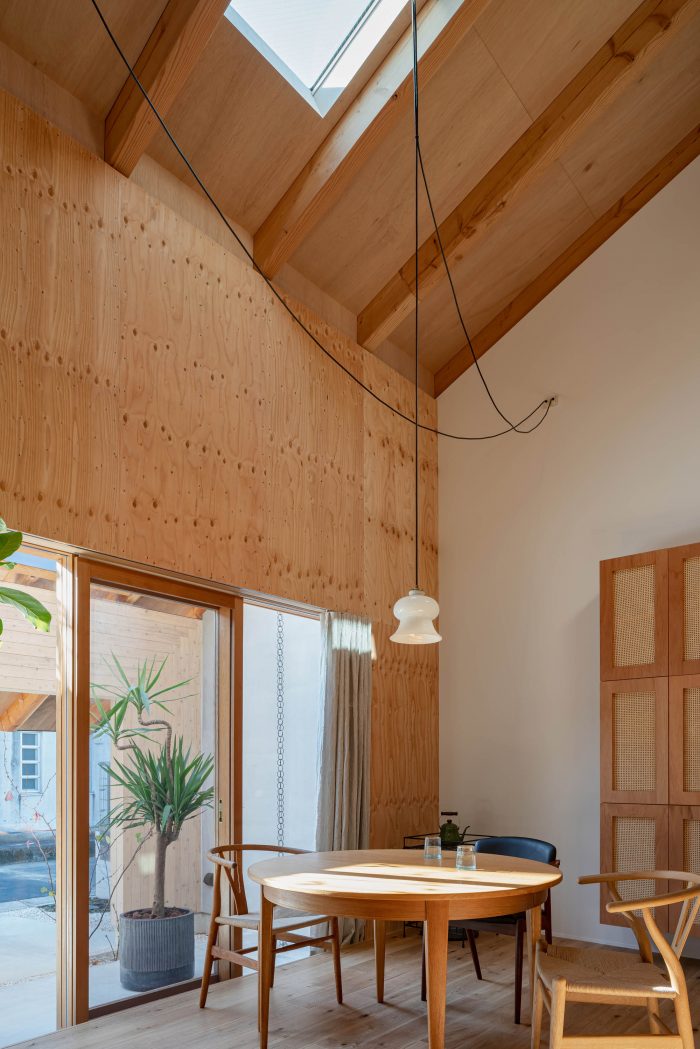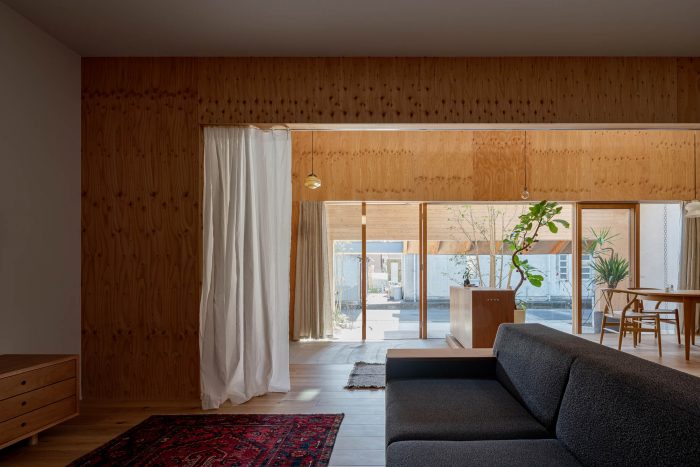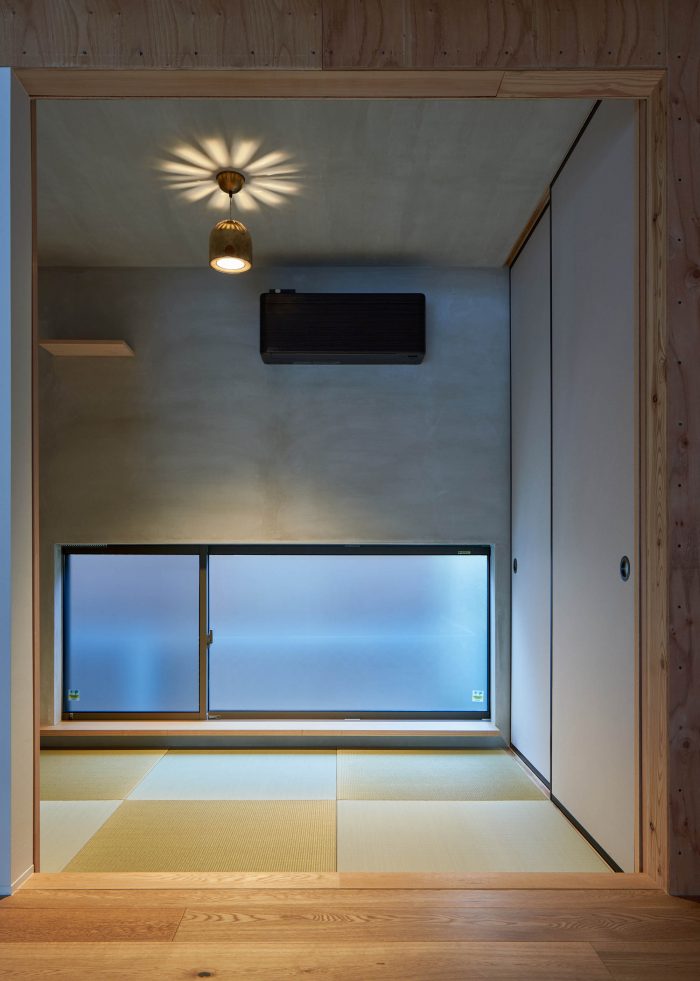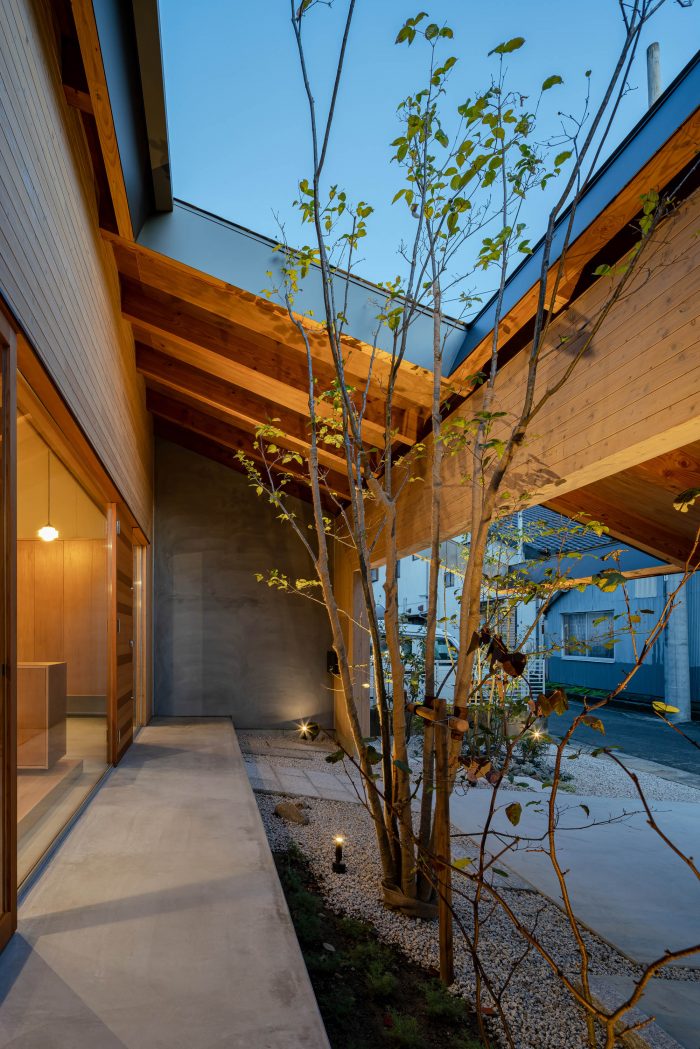当同时要求 “高抗震性 “和 “开放空间 “时。通常情况下,由于结构上所需的墙体量比一层少,所以在二层设置主空间更为合理。
When both “high earthquake resistance” and “open space” are required. Usually, it makes more sense to have an Main space on the second floor because the amount of walls required structurally is less than the first floor.
在这里,我们的目标是在给定的条件下获得最大的空间体量,考虑到前路是独立产权的 “私路 “的周边环境,规划一个内外无缝连接的空间。
Here, we aim to get the maximum spatial volume in the conditions given by taking in the surrounding environment of the “private road” where the front road is an individual property and planning a space in which the inside and outside are seamlessly continuous.
通过使其成为只有8.0m宽度的 “门框 “的简单明了的配置,实现了抗震性能的良好平衡和大开口。这条从主干道上延伸出来的 “私路 “像一条支路一样围绕着这一带延伸,分别形成了一个独特的社区。
By making it a simple and clear configuration that only has a “gate- frame” of 8.0m in width, it achieves both well-balanced earthquake resistance performance and a large opening. This “private road” extending like a branch from the main road was stretched around this area, and a unique community was formed respectively.
将与各条道路不同的独特的地域性,如实地融入到生活空间中,我们认为,作为当地产业的副产品,可以作为社区的住宅区,为地区发展做出贡献。
By incorporating the unique locality that is different from each road into the living space as it is, we thought that it would be possible to contribute to regional development as a new climate as a residential area for communities that could be made as a by-product of local industries.
除了作为抗震构件的作用外,”门框 “还起到了一把尺子的作用,通过有规律的排列,赋予空间节奏感,衡量与城市的距离感,通过在每个门框中插入栏杆,可以轻松地根据生活为每个门框实现私密性。
In addition to its role as an earthquake-resistant element, the “gate- frame” plays a role as a ruler that gives rhythm to the space by arranging at regular intervals and measures the sense of distance from the city, and by inserting rails into each frame, it is possible to easily make it private according to life for each frame.
为了尽可能有效地利用有限的房舍,通过将屋檐延伸到前面的道路一侧,不断地创造外部空间,预计住户的生活会逐渐渗出到大屋顶下的区域。
In order to make effective use of the limited premises as much as possible, it is expected that the life of the resident will gradually ooze out into the area under the large roof by extending the eaves to the front road side and creating an external space continuously.
得益于周边的环境,偶然间被适度包裹,我们得以将周边的土地包括道路作为生活空间。这是一种将居住者要求的需求、解决土地的结构形式等混合在一起,在这片土地上生根发芽的建筑方式。
Thanks to the surrounding environment, which was wrapped moderately by chance, we were able to take in the neighboring land including the road as a living space. It is a way of construction which took root in this land made by mixing the demand that the resident requests, the structure form to solve the land, and these.
建筑师:Tatsuya Kawamoto + Associates
面积:140 m²
年份:2020年
摄影:Takashi Uemura
首席设计师:Tatsuya Kawamoto
建筑师:Tatsuya Kawamoto + Associates
承包商:Sawazaki kensetsu Company Limited
城市:一宫
国家:日本
Architects: Tatsuya Kawamoto + Associates
Area: 140 m²
Year: 2020
Photographs: Takashi Uemura
Lead Architect:Tatsuya Kawamoto
Architect:Tatsuya Kawamoto + Associates
Contractor:Sawazaki kensetsu Company Limited
City:Ichinomiya
Country:Japan


